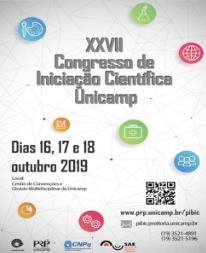Resumo
Biofilms are surface attached, matrix embedded micro-organisms. Biofilms are difficult to eradicate since Biofilm structure prevents the penetration of chemical agents and makes more resistant to antimicrobials. This research evaluate the efficacy routine chemical agents in removing bacterial biofilms. Agar well diffusion, MIC and MBC evaluate the efficacy against planktonic bacteria. Post-exposure biofilm biomass was quantified using CV assay. All disinfectants tested effectively eradicate biofilms and planktonic bacteria, whereas 2% chlorhexidine diclogunate and 2% sodium hypochlorite demonstrate highest efficacy.
Referências
Eengelhart S, Krizek L, Glasmacher A, et al. Pseudomonas aeruginosa outbreak in a haematology-oncology unit associated with contaminated surface cleaning equipment. J. Hosp. Infect. 2002; 52, 93-8.
Okshevsky M, MEYER RL. The role of extracellular DNA in the establishment, maintenance and perpetuation of bacterial biofilms. Crit Rev Microbiol. 2015; 41, 341-52.

Este trabalho está licenciado sob uma licença Creative Commons Attribution 4.0 International License.
Copyright (c) 2019 Revista dos Trabalhos de Iniciação Científica da UNICAMP

